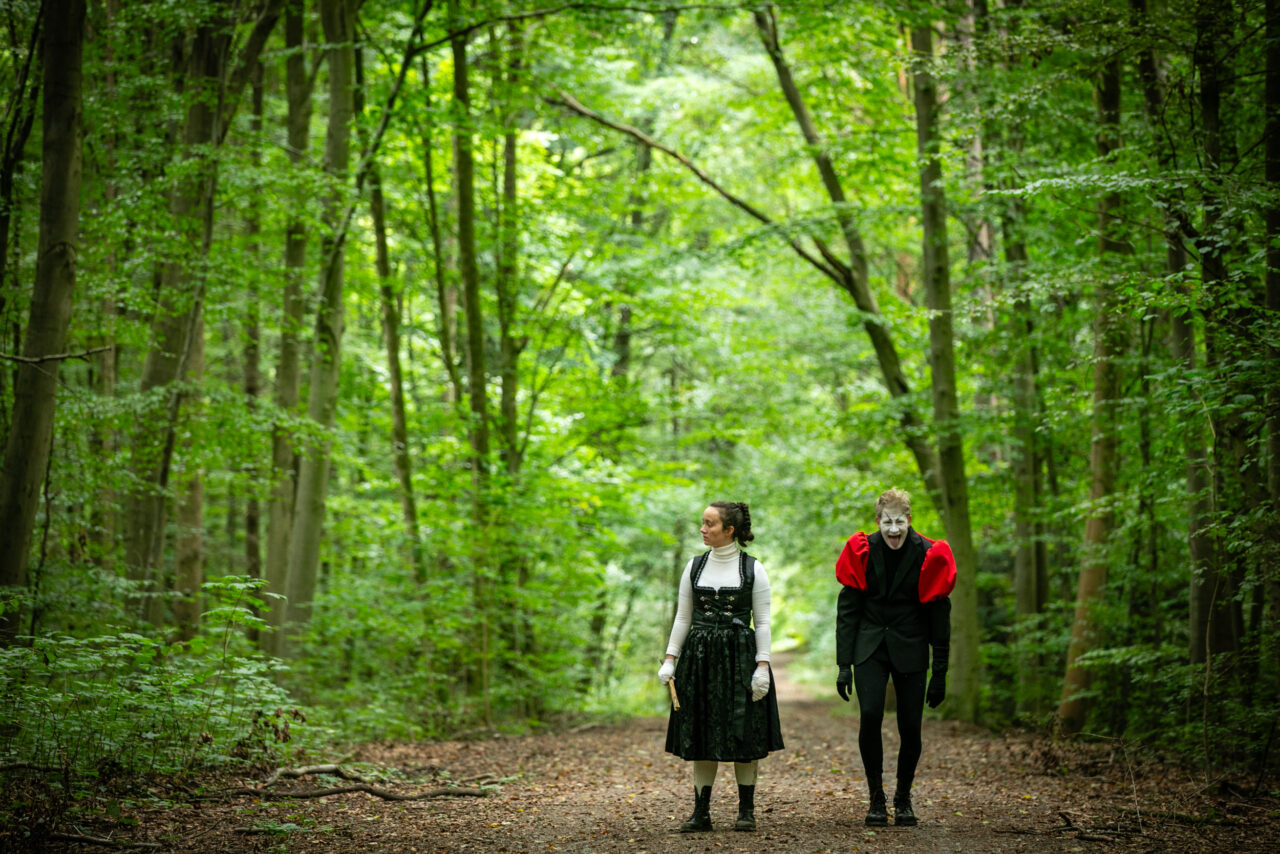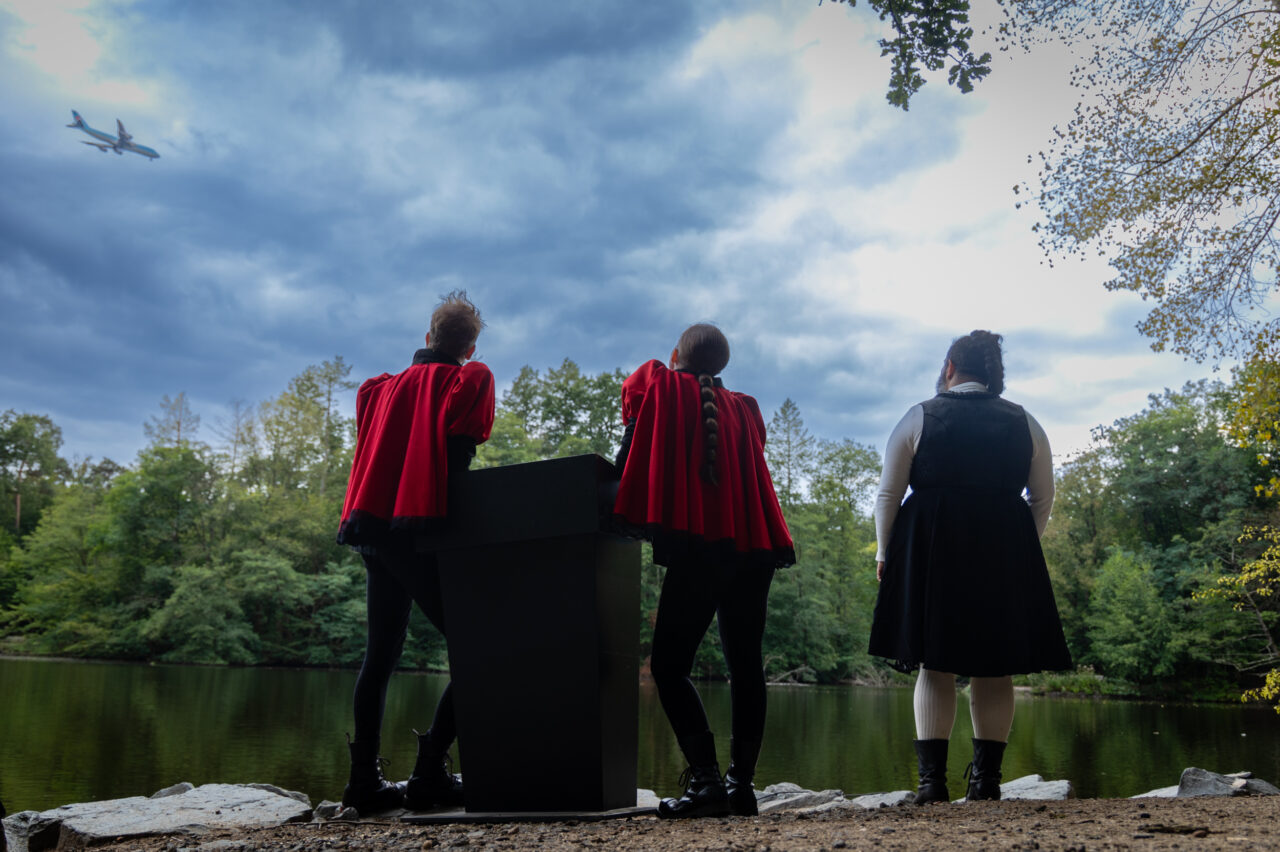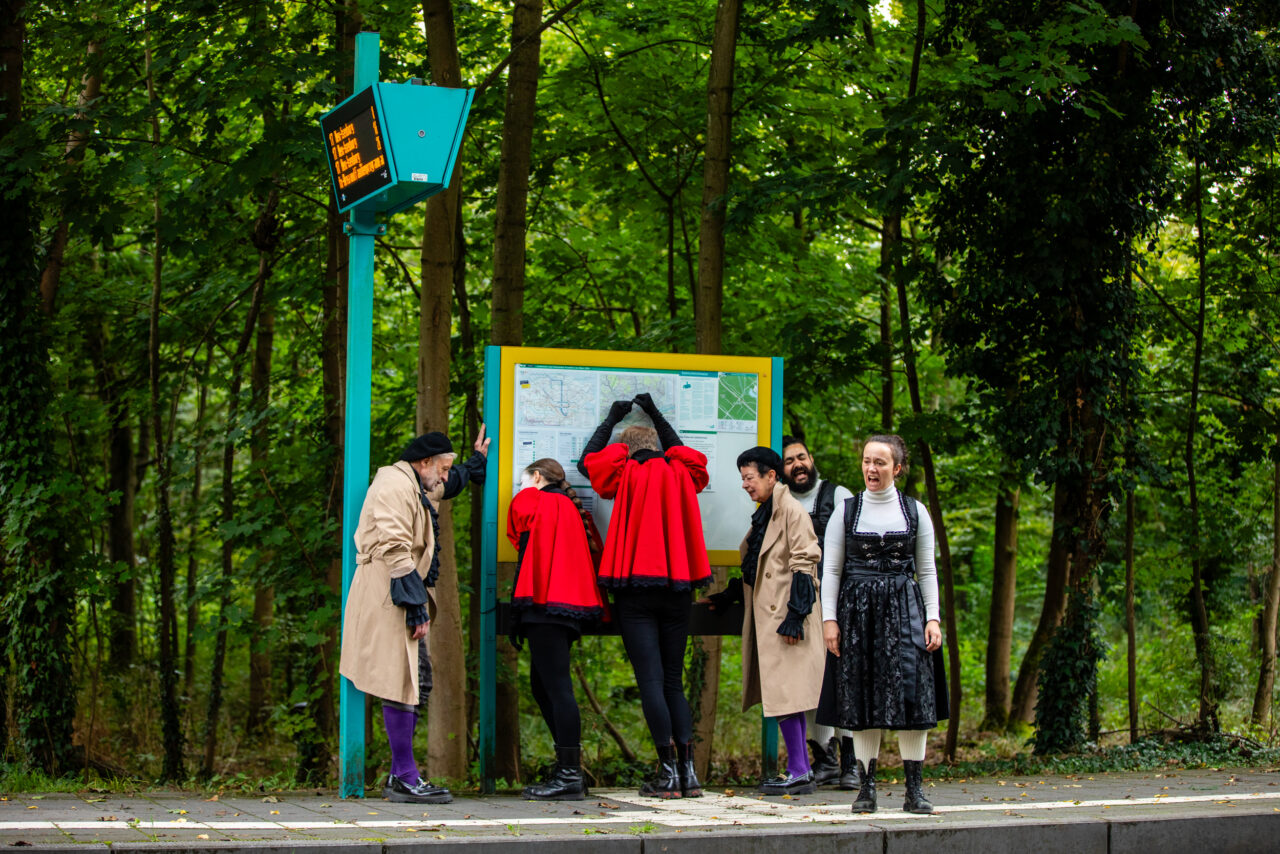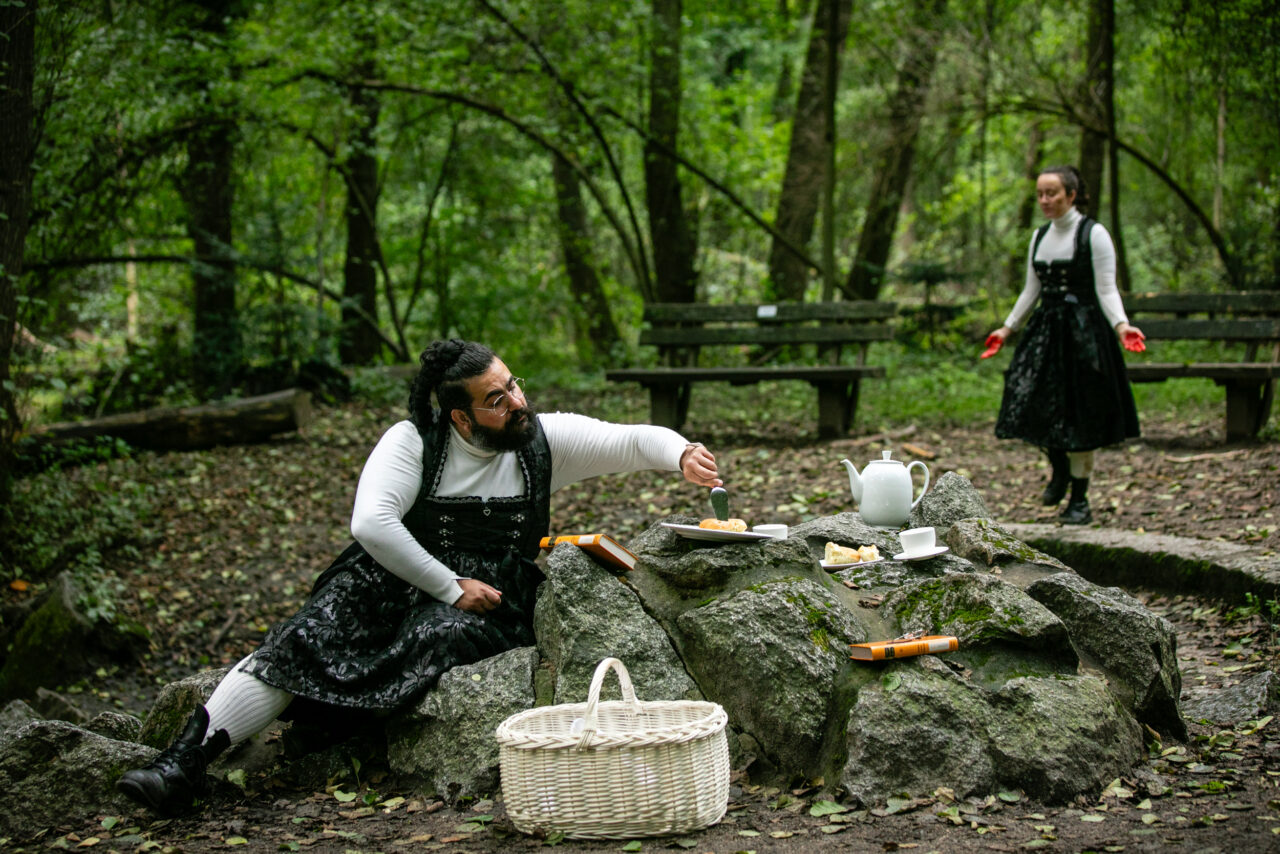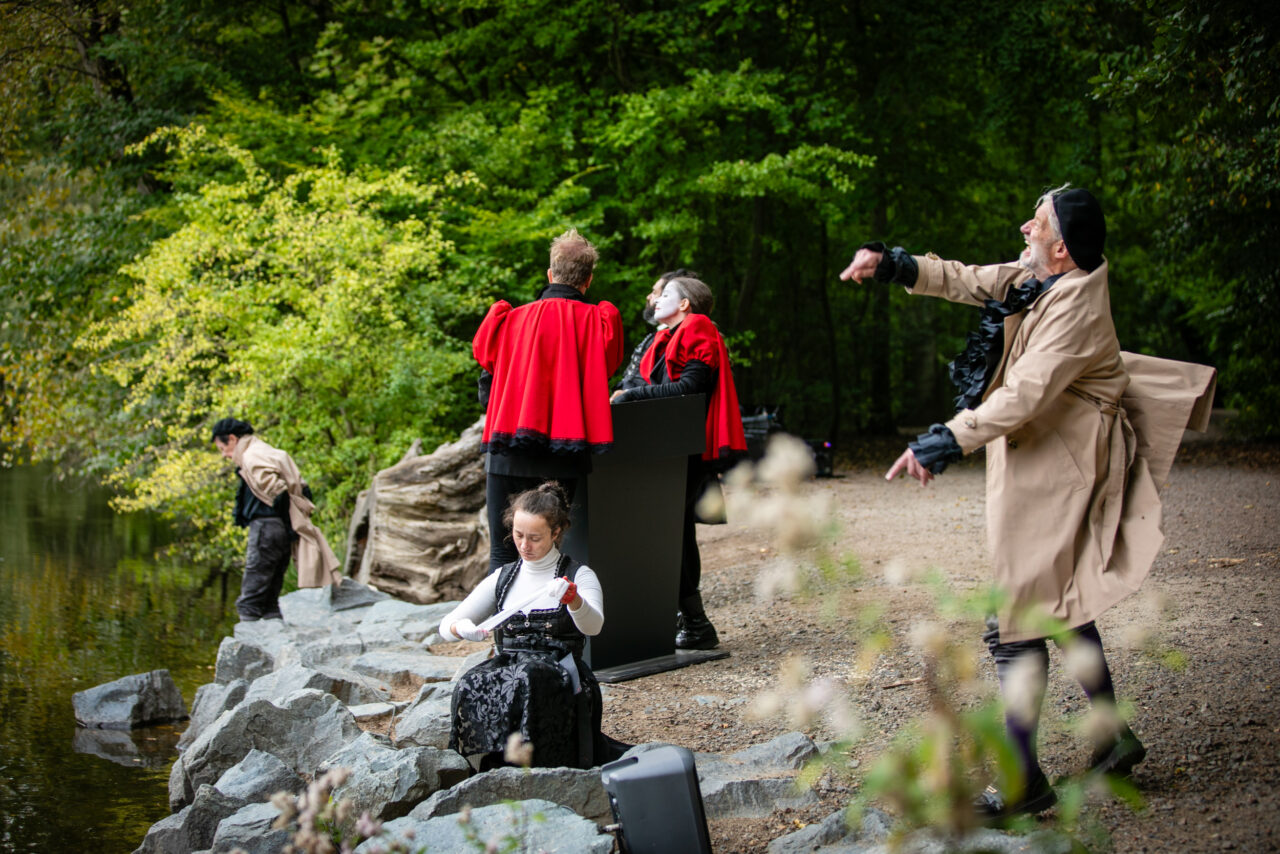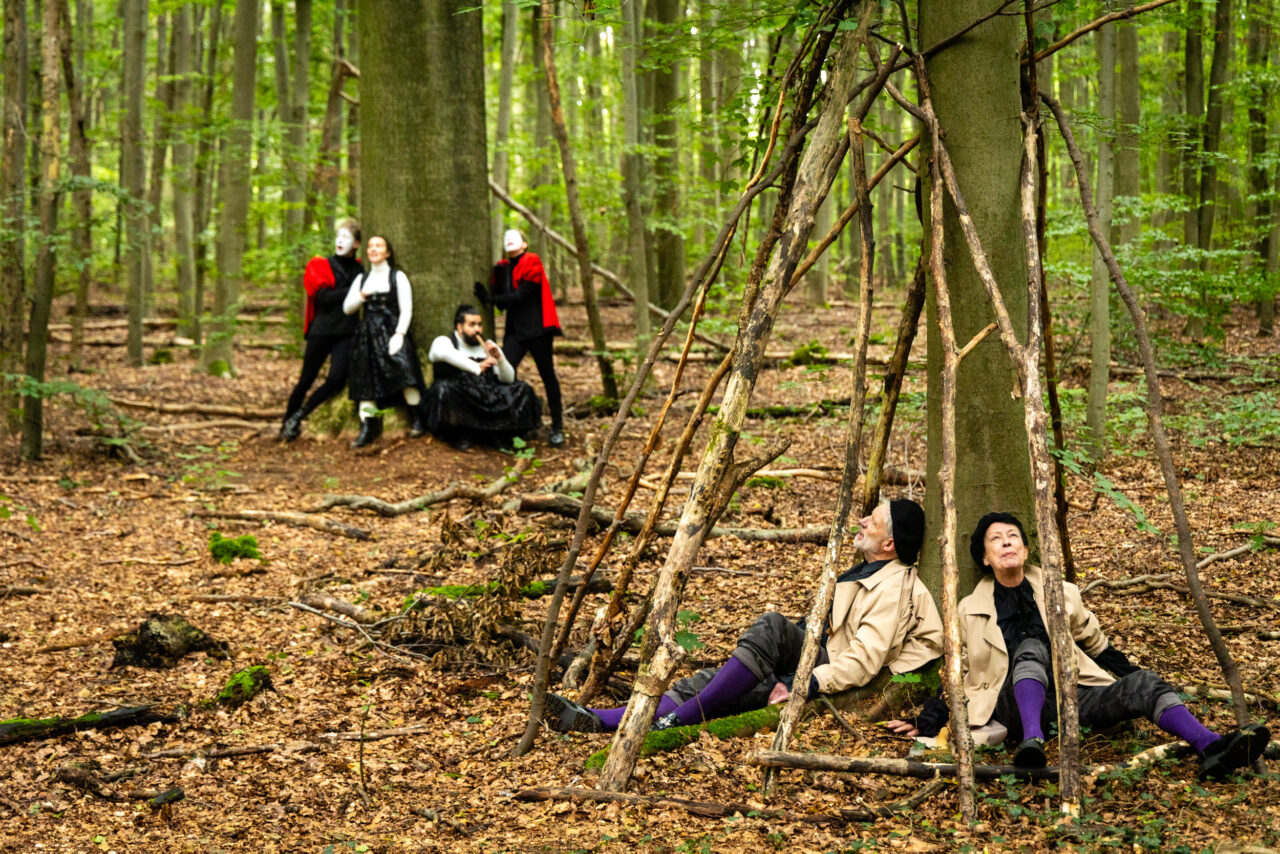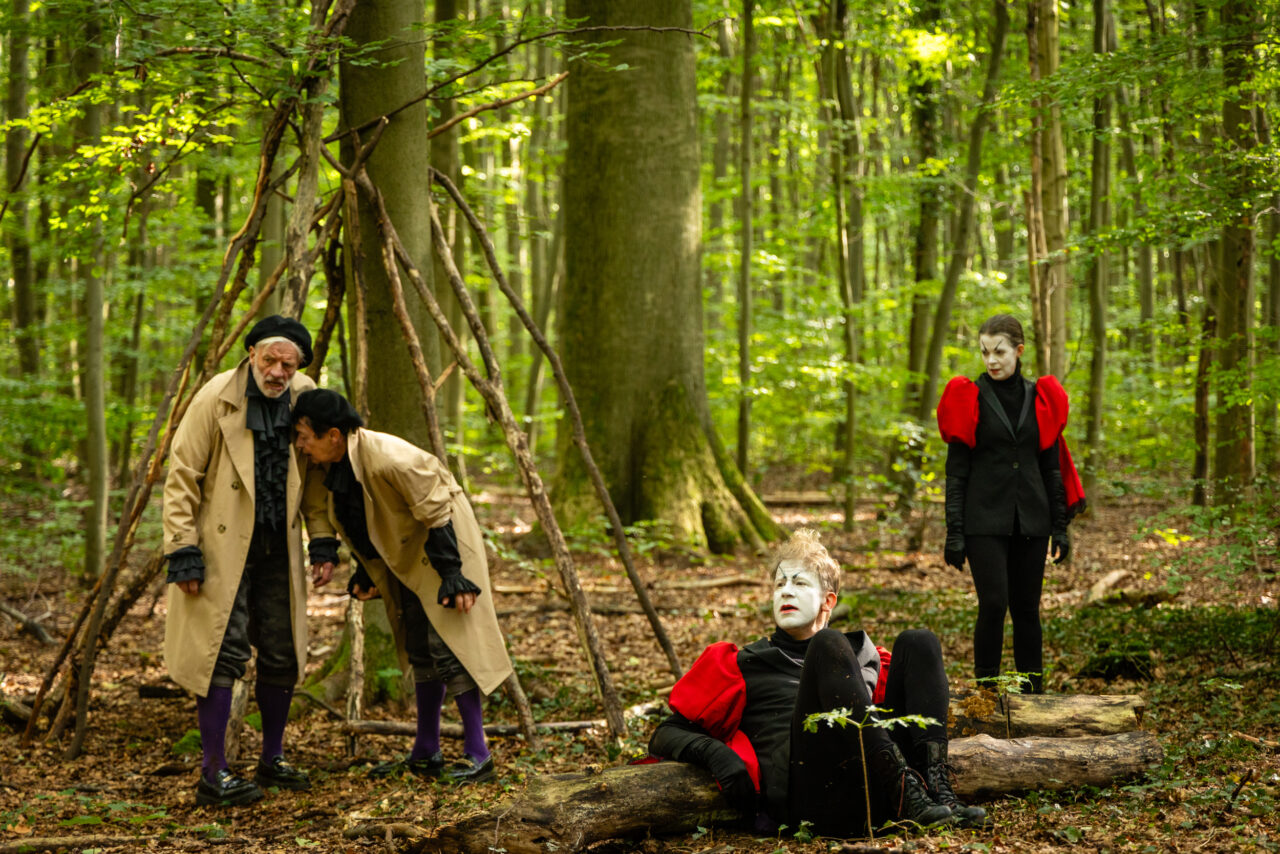The German Forest in Autumn
The theater leaves its sheltered and healthy spaces and moves into the open—into the forest, the sick one. In Frankfurt’s city forest, there is hardly a tree that is not diseased. The city forest becomes the setting for a production on the themes of 80 years since the end of the war and 35 years of German unity—reflecting on Germany. Thomas Mann did so in 1945, as a newly naturalized American.
The forest is often described as a mirror of German inwardness; Thomas Mann examines this inwardness as the epitome of the Romantic era and shows us how, with the Germans, the devil was always present. Faust and his historical counterpart Martin Luther are his protagonists—Faust, Gretchen, Mephisto will be the cast for our theatrical walk through the forest.
Scenes from Goethe’s Faust accompany the eight stations of Mann’s speech, guiding the audience from hell through the world to heaven. At least, that is the hope the author expresses at the end of his lecture: “It could well be that the liquidation of Nazism has cleared the way for a social reform of the world, one that offers Germany’s innermost nature and needs the greatest opportunities for happiness.”
What Thomas Mann reflected upon in his speech as an American deserves to be heard again. And in this context, and in the (ailing) German forest, the Faust text could not find a more powerful resonance.
